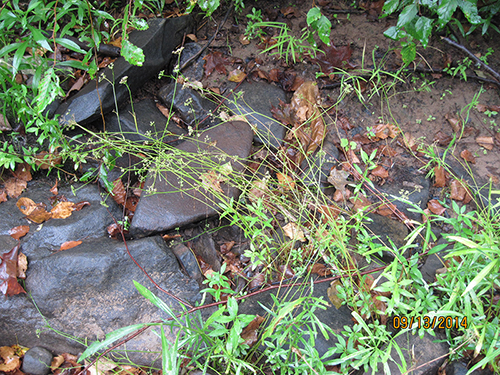Wetland Studies and Solutions, Inc. (WSSI) is preparing for another season of harperella (Ptilimnium nodosum) surveys. This small, endangered perennial member of the carrot family lives along larger rocky creeks in Virginia and Maryland. The field survey "window" for harperella is open from July 1 to September 30. Schedule now and avoid critical delays in obtaining your wetlands permit or other federal actions that require Endangered Species Act compliance.
Harperella’s endangered status means it is protected by both federal and state endangered species laws, and the U.S. Army Corps of Engineers and Virginia Department of Environmental Quality must consider potential impacts to this species before issuing permits to impact wetlands and other jurisdictional waters.
The U.S. Fish and Wildlife Service (USFWS) recommends a survey for any site with suitable habitat if the site is in a county of known harperella occurrence, or in adjacent counties if predictive models indicate that habitat could be present in those counties. According to the USFWS, harperella has been recorded in Stafford County, Virginia, and Washington and Allegany Counties in Maryland, however it’s possible that the plant is more widespread in Virginia and Maryland than inventories have revealed.
WSSI can conduct relatively inexpensive preliminary site evaluations at any time of year to determine if potentially suitable habitat is present. For some sites, a habitat evaluation may rule out harperella on the site. Any site with suitable habitat, however, must be searched between July 1 and September 30 (when harperella is flowering or in fruit) to comply with USFWS guidelines.
Due to this limited survey "window," proper planning for sites having suitable habitat is critical. Failure to have a harperella survey conducted between July 1 and September 30 could potentially result in costly wetlands permitting delays! Therefore, if your site needs a wetlands permit and is in or adjacent to the documented counties, you should consider having a harperella habitat evaluation (or survey) conducted as early in the development process as possible to minimize potential impacts to your development schedule. Surveys are valid for a period of one year, and if the site is not developed within one year of the completion of the survey, the USFWS may request that the site be re-surveyed. |

WSSI staff found this harperella specimen on a site in 2014
|
Conducting an ETS Survey
The USFWS has compiled a list of consultants and botanists with sufficient experience conducting harperella surveys to reliably survey a site for this species. WSSI has conducted a number of habitat evaluations and surveys for harperella and WSSI staff are on the USFWS list of approved harperella surveyors.
Plant Habitat and Characteristics
In Virginia and Maryland, harperella generally occurs along larger creeks with little to no overhead canopy coverage. Hydrology is the most important factor in habitat for harperella, so the substrate must be stable and seasonally flooded. Areas along the creek that are too wet or too dry will not support harperella.
Harperella has thin green leaves that look similar to grass. In the summer, plants will produce a several umbels (umbrella-like clusters) of small, white flowers. In the late summer and fall only the leaves will persist, and the plant dies back completely in the winter months.
For further information about harperella or to have WSSI conduct a harperella habitat evaluation or survey on your site, please contact Ben Rosner or Mark Headly.
|
|
|